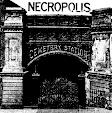ON THE TWELFTH NIGHT OF HALLOWEEN … I watched Hour of the Wolf (1968), a surreal horror film by Ingmar Bergman.
A painter and his wife (played by Bergman regulars Max von Sydow and Liv Ullmann) move to a cottage on a small Scandinavian island. They are happy there, at first. Soon, though, the painter grows distraught. He shows his wife drawings that he’s made of various nightmarish creatures, which he says have actually appeared to him. These include insect people, an old woman who removes her face, and a bird-like humanoid. The wife is worried that the painter is losing his mind, but weird people then start manifesting to her as well. The couple is invited to a dinner party at a baron’s castle on the island. At the party, the baron and the group of relatives, in-laws, and functionaries that live with him turn out to be sinister characters who enjoy taunting and harassing the painter and his wife. Back in their cottage, the couple hold vigils every night until morning for fear that they will be attacked in their sleep. During one of these vigils, the painter confesses that he killed a child whom he believed to be a goblin that had attacked him many years prior. Eventually, the painter feels compelled to shoot at his wife and venture back to the castle in search of a former lover. At the castle, he finds that the Dracula-like baron and his family have become the creatures from his drawings. They pursue him through the castle and chase him into the woods. Eventually, they eat him alive while the wife looks on in terror. In the wife’s closing narration, she wonders if she also saw the creatures because she had been infected with her husband’s madness, in a folie à deux—or if it was because these “man-eaters” were already on the island, waiting for them.
Hour of the Wolf is the one Bergman piece that definitely qualifies as a horror movie, though much of his other work similarly features characters descending into madness and having terrifying visions. Also like much of this other work, this film is hauntingly beautiful to look at, richly poetic in dialog—and a bit too self-serious for its own good. Unlike his other work, however, Hour of the Wolf remains highly tense throughout, which it achieves largely due to how weirdly surprising each new development is.
“Take a look in the mirror. Now you are yourself, and yet not yourself,” the malevolent baron says to the painter after dressing him up and applying makeup to his face—to bring us back to our TWISTED TWINS & DUPLICITOUS DOPPELGÄNGERS theme. In Hour of the Wolf, the doubles are creatures from the painter’s imagination that are then duplicated in the real world for both the painter and his wife. Alternatively, according to the wife’s conjecture, the creatures were already there, meaning that they used their unnatural powers to duplicate themselves as visions that inspired the drawings of them. A third possibility is that there are no creatures at all. Rather, the painter projected his hallucinations of the hideous entities into his wife’s mind through a shared insanity engendered by living so closely together. Note that in all three interpretations, though, the artist’s drawings play a major role. Artists create doubles of the entities they depict. When their art is successful, these entities come alive in others’ minds and often transfer over into reality, through life-imitating-art. In this way, art can be viewed as an alchemical or sorcerous means of creating real doppelgängers.


No comments:
Post a Comment